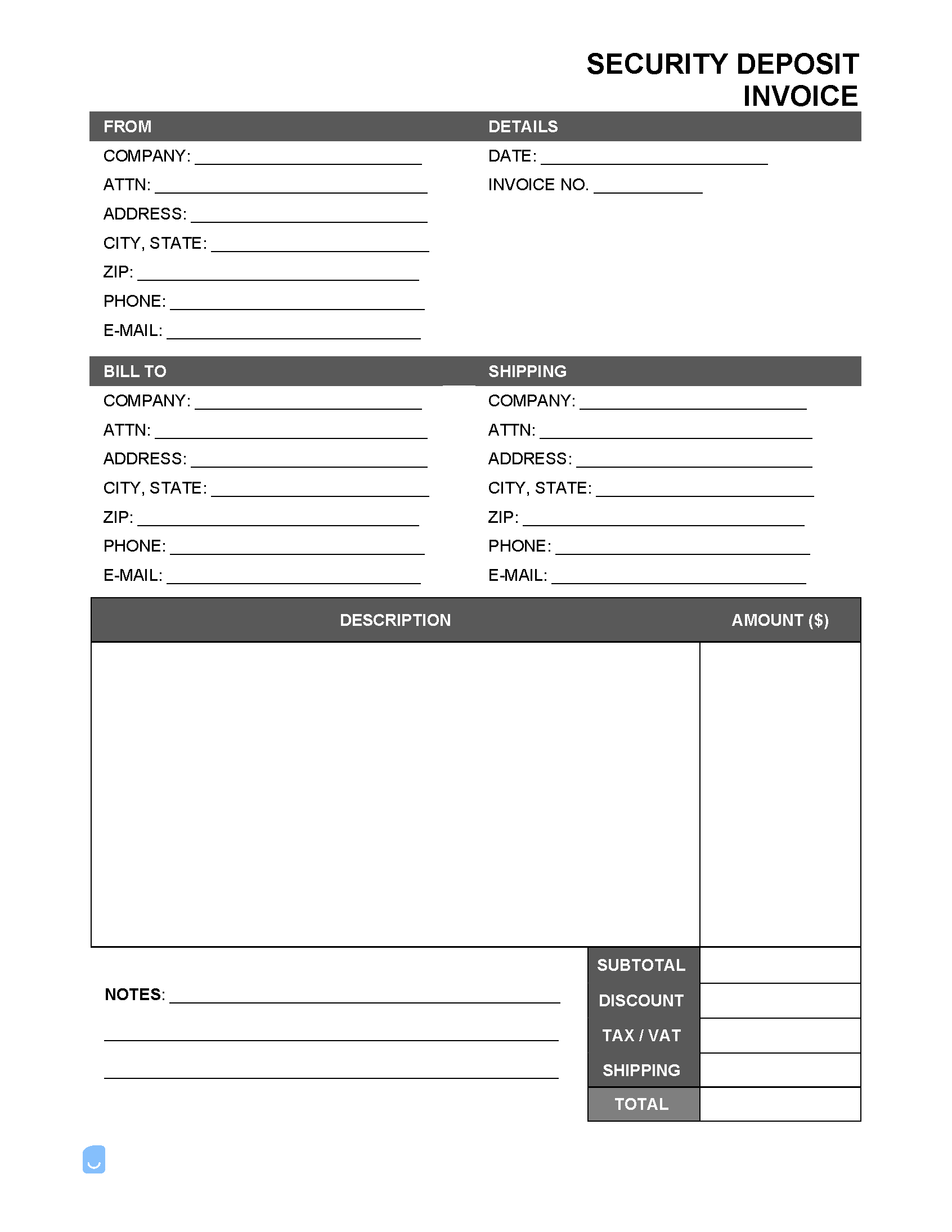Security Deposit Invoice Template
A security deposit invoice is served to a tenant either requesting payment or showing proof of payment for a security deposit. This invoice can be used on two different occasions: A landlord can 1) use this invoice to request payment for the security deposit when renting out a property, or (2) a tenant can serve this invoice to request the return of the security deposit after the lease terminates.
What is a Security Deposit?
A security deposit is a payment made by a tenant and handed to a landlord as insurance. By law, the landlord cannot spend this money (the security deposit) once it’s in their possession. Normally the security deposit payment is kept in an escrow account until the end of the tenant’s rental term. If damage occurs to the property during the tenancy, the landlord is protected from loss by possessing the security deposit. Also, if a tenant breaches the rental agreement, they could lose their security deposit depending on the language stated in the rental agreement. A few basic rules about Security Deposits:
- Normally, a security deposit is equal to one (1) months’ rent.
- Each state has its own set of laws when it comes to security deposit rules. In most cases, landlords can not request more than two (2) month’s worth of rent for security.
- Landlords are required to return a security deposit after a tenant moves out, typically 30 to 60 days afterward.
How Much is a Security Deposit?
A security deposit is measured to one (1) months’ worth of rent. If a tenant is paying $500 per month in rent, a landlord would typically require a security deposit payment of $500 before allowing the tenant to move in. The security deposit amount is based on the tenant’s credit score; the lower the score, the higher the security deposit will be. High-risk tenants can expect to pay the maximum security deposit allowable under state law.
Do You Get Security Deposit Back?
Two (2) major factors decide the fate of a security deposit return; the language written in the rental contract and the security deposit statutes (laws) in your state. After a tenant moves out of the property, the landlord will inspect for damages. If any damages are found, the amount will come out of the security deposit. Depending on the state, a landlord is required to return the security deposit within a certain time from the lease termination date. For example, in California, a landlord has sixty (60) days to return the security deposit to the tenant.
What Can a Landlord Deduct from a Security Deposit?
A landlord can deduct almost any loss incurred onto them by the tenant, which can include the following:
- Penalties due to breach of contract;
- Unpaid rent;
- Property repairs caused by the tenant; and
- Unpaid late fees (a charge to the tenant when late paying rent).
All deductions should be clearly stated in the security deposit invoice upon return to the tenant (if any).
